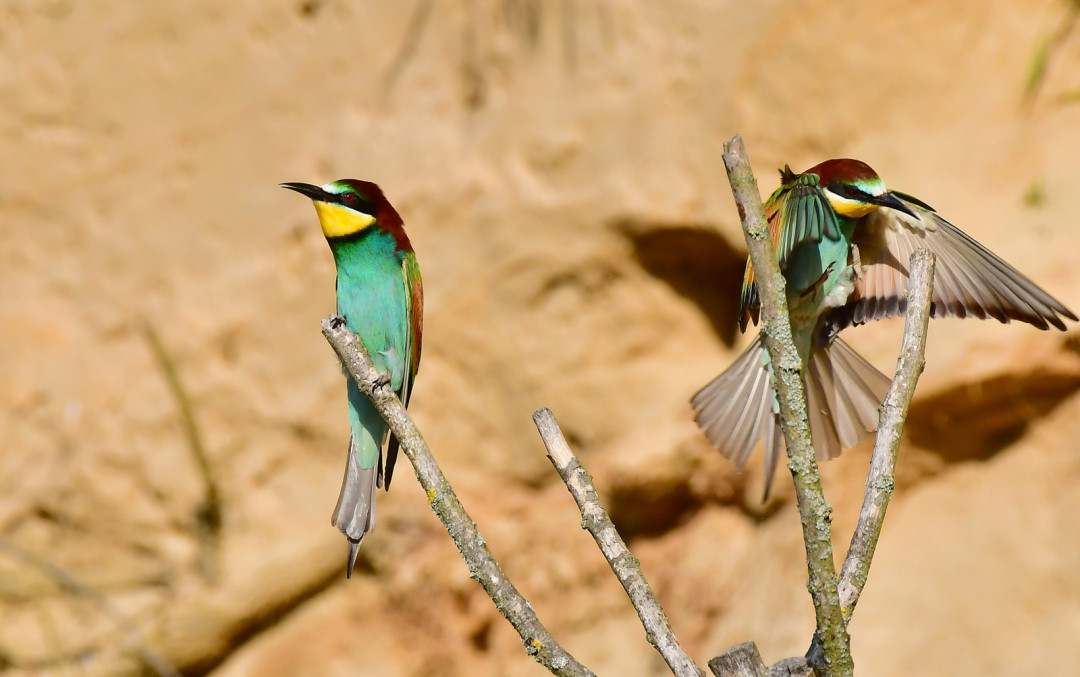One of the most colorful birds in Slovenia is once again nesting in Bizeljsko
One of Slovenia’s most colorful bird species has returned to Bizeljsko – more precisely to Župjek. The European bee-eater has migrated back from tropical Africa.
Similar in size to a blackbird or a starling, its vibrant plumage makes it appear larger, and it stands out even more while in flight.
Bee-eaters are highly social birds – they are rarely seen alone, typically flying in small or even large flocks. This behavior is common both during migration and the nesting season.
Due to their habit of often catching bees, they are named after this insect in many languages (in Slovene: čebelar, Croatian: pčelarica, English: bee-eater, German: Bienenfresser, Slovak: včelárik zlatý, and many others). Their slender, tweezer-like beak is perfectly adapted for catching insects mid-flight. However, they actually prefer feeding on larger insects rather than bees.
In Slovenia, bee-eaters nest at only a few locations – the oldest continuously recorded colony is located in Kozjansko Regional Park, specifically in an abandoned quartz sand quarry in Župjek, where they have been nesting since 1984.
A unique feature of this site is the quartz sand – firm enough for bee-eaters to dig up to one-meter-deep tunnels into the vertical wall without the risk of collapse. The eggs, female, and chicks are well protected inside from predators. Next to the sandy wall is the Sotla River and rich meadows that provide enough food to sustain up to 50 bee-eater families.
Visitor-friendly – Bird-safe
Thanks to their colorful appearance and interesting behavior, bee-eaters attract many birdwatchers and photographers. To accommodate this interest, the nesting area in the quarry has been specially arranged for visitors. A wooden birdwatching hide allows people to observe the birds without disturbing them – through its openings, you can enjoy watching these aerial acrobats with binoculars.
For photographers, Kozjanski Park has set up a special photo-hide closer to the nesting wall. Since space is limited (only two photographers allowed at a time), a prior reservation is required. Reservation contact: Toni Preskar, +386 41 381 560
To conclude, it's important to emphasize that bee-eaters must be observed respectfully and from a distance. Movement too close to the nests may disturb the birds enough to cause them to abandon their nesting efforts and leave the area.

